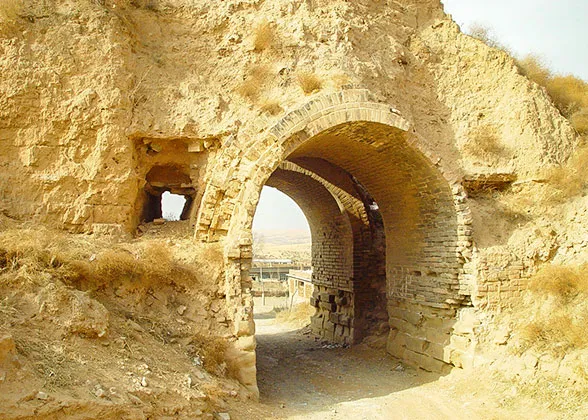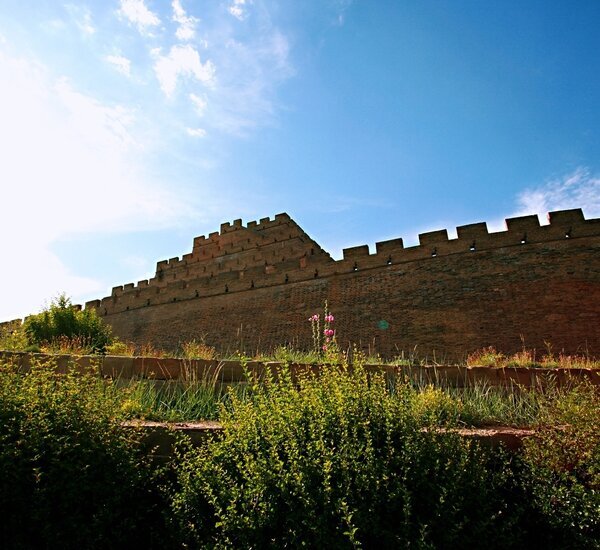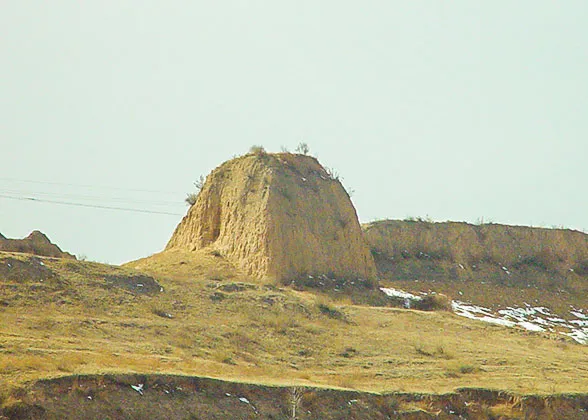Tracing Yulin’s Great Wall History and Cultural Significance
Welcome to Jusha Travel, your go-to source for uncovering the hidden gems of China! If you’re a traveler with a passion for history, culture, or adventure, Yulin’s section of the Great Wall offers an unforgettable journey back in time. Known for its rich Yulin Great Wall History, this region showcases ancient fortifications that played a pivotal role in shaping China’s past. From exploring Yulin historical landmarkshttps://jusha.travel/?p=497 to immersing yourself in the broader tapestry of China Great Wall culturehttps://jusha.travel/?p=497, this post will guide you through the highlights, blending cultural insights with practical tips for your next trip. Here at jusha.travel, we love sharing tips to make your China journey unforgettable, so let’s dive into this fascinating world of ancient walls and timeless stories.
Image 1: 
The story of the Great Wall in Yulin is a testament to centuries of ingenuity and resilience, making it a must-visit for anyone interested in China history travelhttps://jusha.travel/why-xians-terracotta-warriors-are-worth-the-hype/. Yulin’s sections of the Great Wall began taking shape during the Warring States Period (475–221 BC), when early fortifications were built by the Qin and Wei states to defend against northern incursions [source: The Great Wall at Yulin]. This intricate network evolved through the Sui, Tang, and Ming dynasties, with the Ming era (1368–1644) marking a peak in construction due to ongoing threats from Mongol tribes.
Stretching an impressive 921 miles (1,482 km), the Yulin Great Wall system includes walls, forts, towers, moats, and even horse-blocking pits, all designed for both defense and control [source: Great Wall in Yulin, Shaanxi]. As you wander these paths, you’ll encounter remnants that reflect over 1,000 years of military adaptation, from simple rammed-earth barriers to sophisticated brick and stone structures. It’s not just about the bricks and mortar; this area embodies the spirit of Yulin Great Wall History, where emperors and soldiers alike contributed to a legacy that symbolizes China’s determination to protect its borders.
For travelers, visiting Yulin provides a unique opportunity to connect with Cultural attractions Yulinhttps://jusha.travel/?p=497. Practical tip: Plan your trip during the cooler months (April to October) to avoid harsh winds, and consider hiring a local guide through platforms like Trip.com for deeper insights. Don’t miss the chance to explore nearby sites like the Zhenbeitai Tower, which served as a key watchpost and now offers stunning panoramic views—perfect for capturing Instagram-worthy photos.
Image 2: 
Beyond its historical roots, Yulin’s Great Wall held immense strategic and military significance, positioning it as a critical bulwark in China’s defense network. Located on the northern frontier, Yulin served as a frontline against invasions, particularly during the Ming Dynasty when it separated Han Chinese territories from Mongol-controlled lands [source: The Great Wall at Yulin]. This area’s dense array of fortresses, beacon towers, and garrisons allowed for rapid communication and coordinated defense, making it one of the most fortified sections of the entire wall.
Key landmarks like Zhenbeitai, often called the “Pacify the North Tower,” not only guarded against raids but also facilitated controlled trade between cultures, highlighting the blend of conflict and commerce in China Great Wall culture. As you explore these sites, you’ll gain a deeper appreciation for how the wall influenced daily life, from military drills to economic exchanges. For instance, markets near the wall enabled the trade of goods like tea and horseshttps://jusha.travel/?p=13, fostering a cultural melting pot that continues to influence modern Yulin.
If you’re planning a Yulin travel guide-style adventurehttps://jusha.travel/exploring-the-best-hiking-trails-in-china-a-guide-to-adventure-and-natural-wonders/, pack sturdy shoes for hiking the wall’s rugged paths and consider using apps like Baidu Maps for navigation. A fun fact: The wall’s design innovations, such as its beacon tower system, paved the way for early signaling technologies in China, linking ancient defense strategies to today’s digital world. This connection to technology reminds us how China’s historical ingenuity continues to inspire innovation, much like the travel tech tips we share on jusha.travel to enhance your explorations.
Image 3: 
The cultural and economic impact of the Yulin Great Wall extends far beyond its military role, weaving a rich narrative of exchange and identity that defines Cultural attractions Yulin. As a frontier zone, Yulin became a hub for interactions between Han Chinese and nomadic peoples, promoting trade, assimilation, and the sharing of customs [source: The Great Wall]. Protected marketplaces under towers like Zhenbeitai allowed for the exchange of goods, ideas, and even culinary traditions, such as the hearty northern dishes like lamb stew or hand-pulled noodles that you can still savor in local eateries today.
This blending of cultures is evident in the wall’s literary legacy, with ancient poems and ballads, like those by the poet Tu Fu, immortalizing the sacrifices of soldiers and builders [source: Great Wall of China]. These stories underscore the wall’s role in shaping a shared Chinese identity, making Yulin a living museum of China Great Wall culture. For culture enthusiasts, attending a traditional folk performance or visiting nearby temples can provide a deeper cultural immersionhttps://jusha.travel/exploring-chinese-festivals-a-guide-to-vibrant-cultural-celebrations-in-china/.
As part of your Yulin travel guide, embrace sustainable travel by joining eco-tours that highlight the wall’s preservation efforts. Interesting fact: The labor-intensive construction drew people from diverse regions, accelerating the spread of customs and even influencing modern Chinese cuisine with frontier flavors. This ties into jusha.travel’s mission of inspiring mindful exploration, where history and culture come alive through every step.
Image 4: 
Yulin’s Great Wall isn chết just a relic of the past; its architectural features and innovations offer a glimpse into the engineering marvels that have stood the test of time. From rammed-earth foundations to Ming-era brick cladding, the wall’s evolution reflects advances in military architecture tailored to the harsh northern environment [source: History of the Great Wall of China]. Features like 1.5-meter-high battlements and strategic watchtowers, spaced for line-of-sight signaling, demonstrate the foresight of ancient builders.
Today, well-preserved sites such as Jian’an Fort and Changle Fort invite visitors to walk in the footsteps of history, experiencing the wall’s “outstanding universal value” as recognized by UNESCO [source: The Great Wall]. These landmarks are prime examples of Yulin historical landmarks, blending ancient design with natural beauty.
Conclusion
In tracing Yulin’s Great Wall history and cultural significance, we’ve uncovered a story of resilience, exchange, and enduring legacy that captures the essence of China history travel. From its strategic military role to its vibrant cultural influences, Yulin stands as a beacon for travelers seeking authentic experiences in China Great Wall culture. Whether you’re hiking the walls or savoring local flavors, this destination promises memories that last a lifetime.
Here at jusha.travel, we’re passionate about guiding you through China’s wonders, so we encourage you to share your thoughts in the comments below, visit jusha.travel for more in-depth guides and related articles, or explore our recommendations for other historical siteshttps://jusha.travel/?p=497. What’s your favorite Great Wall story? Let us know and start planning your Yulin adventure today!




